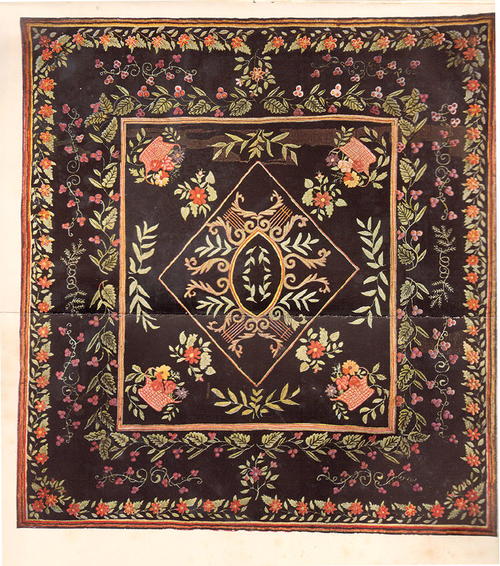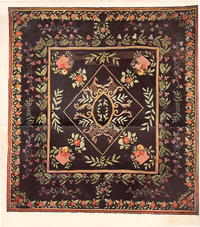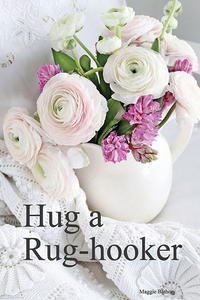Early Hooked Rug Auctions
Precious in the Eyes of the Owner

This rug was sold in 1923 at the Shoemaker auction. The rug had an intriguing story: because of its size, a special loom was set up to weave the burlap foundation (the rug measured 14' x 15') and more than three dozen Massachusetts women hooked it. The rug sold for $2,000 in 1923, approximately $25,000 today.
With the 20th century on the horizon, Americans were prepared to celebrate their history as well as their future. The past had become the place to be, and decorators and designers turned to the 17th and 18th centuries, copied the furniture and textiles, and called the new “old style” the Colonial Revival. “‘Colonial handicrafts’ is what they call it,” said one newspaper writer, “though it might better be named ‘pioneer mothers’ handicrafts. Wherever the strong, fine women of the early days in this land settled . . . these women spun and wove and dyed and knitted and braided . . . The pioneer mothers did this work because they had to and ornamented it because they wanted to.” Interest in hooked rugs soared, and among the collectors were society women who turned to well-known antiques dealers for decorating guidance.
One of the earliest tastemakers to promote the art and old hooked rugs was James M. Shoemaker, owner of a rug manufacturing company that made reproductions of Persian rugs. Shoemaker was a savvy businessman with an excellent eye for design and a sense of knowing what the public was about to want. In the early years of the 20th century, he traveled throughout New England and the Canadian Maritime regions, stopping at farmhouses or shops to inquire about antiques. Along the way, he saw hooked rugs and was immediately smitten by the “handsomest and finest specimens of this domestic art and ingenuity of the American housewife.” Shoemaker claimed that he found one of the loveliest rugs thrown over a sailor’s old sea chest and described his find: “Made by a sailor in the idle hours of a long voyage . . . the heart in one corner, the anchor in another and a star in the center were all symbolic of the maker’s thoughts and aspirations. The colors are red, lavender, sapphire-blue and tan.”
This article is from the January/February 2014 issue. For more information on our issues, check out our issues page.








